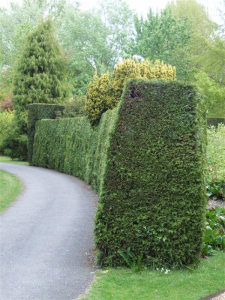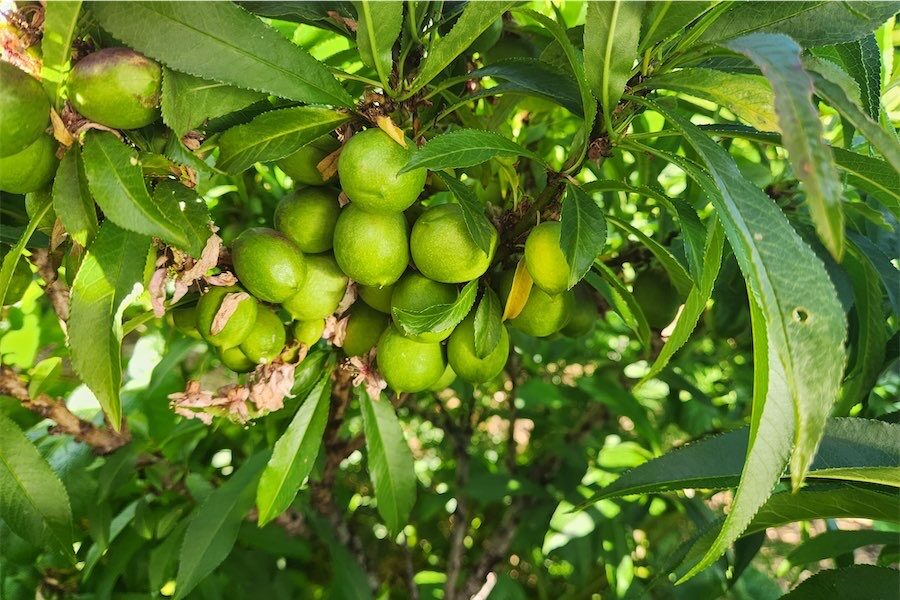
The optimum time to prune conifers is between March and October and they are really no more difficult to prune than any other plant.
Conifers have been a favourite of many gardeners and particularly the large estate owners in Britain and Europe for hundreds of years. Yews have been and are still clipped into every conceivable shape from balls to peacocks, although they do not perform well in our local climate.

If you are planting a hedge, always dig a trench and not individual holes. This will allow the roots to spread evenly with faster growth. Always trim so the top is narrower than the base of the hedge. This allows even daylight and sunlight to penetrate the plant. The most common cause of die-back is when the base of a hedge is wider at the top excluding sunlight to the base.
Like children, it’s important to start the training early if you are going to prune conifers. A drive around Canberra reveals the hundreds of examples where conifers were planted and the owner had no idea of the ultimate size.
Unlike other plants, don’t take too much notice of the size quoted on plant labels. It is standard practice to only show the size at the end of 10 years, not the ultimate size.
An example is the popular hedging conifer x Cuprocyparis Leylandii, which can grow more than a metre a year and up to more than 20 metres in height, depending on the soil.
Used as a hedge between neighbours, it can cause serious ructions and even legal battles. Despite the intention to keep it clipped small, the trunk and roots keep growing, which can cause huge problems with underground services. Check the internet for some alarming information on this conifer before deciding to plant.
AN excellent hedge plant is Thuja occidentalis “Smaragd”, developed in Denmark, which clips very well and retains its shape if given a bi-annual clip as recommended in October and March.
WARNING, unless you have a greenhouse, resist the temptation to buy tomato plants that are appearing for sale now. The rule is don’t plant out until Melbourne Cup Day (November 3) at the earliest.
By planting now you will not get tomatoes any sooner than planted in December. The days and nights need to be consistently warm.
I recall one year we had a minus 6C on November 6, effectively wiping out the whole fruit crop in Pialligo as the frost hit the flowers.
THE Australian Native Plant Society sale will be held at the Australian National Botanic Gardens, 8.30am-1pm, on Saturday, October 17 (bring your own bags and boxes). There is a plant list at nativeplants-canberra.asn.au
Jottings…
- Refrain from watering gladioli unless the weather is very dry. Mulch with composted cow manure.
- Add glucose, sugar or honey to the water of cut flowers to last longer and always remove any leaves under water.
- Plant rue and marigolds around the veggie patch to control insects
- Keep weeds and grass from growing under fruit trees. Grass is a rapacious feeder and can reduce your fruit crop by up to 40 per cent.
- Remember nitrogen for green growth, phosphorus for root growth and potassium for fruit and flowers when feeding plants.
Who can be trusted?
In a world of spin and confusion, there’s never been a more important time to support independent journalism in Canberra.
If you trust our work online and want to enforce the power of independent voices, I invite you to make a small contribution.
Every dollar of support is invested back into our journalism to help keep citynews.com.au strong and free.
Thank you,
Ian Meikle, editor




Leave a Reply